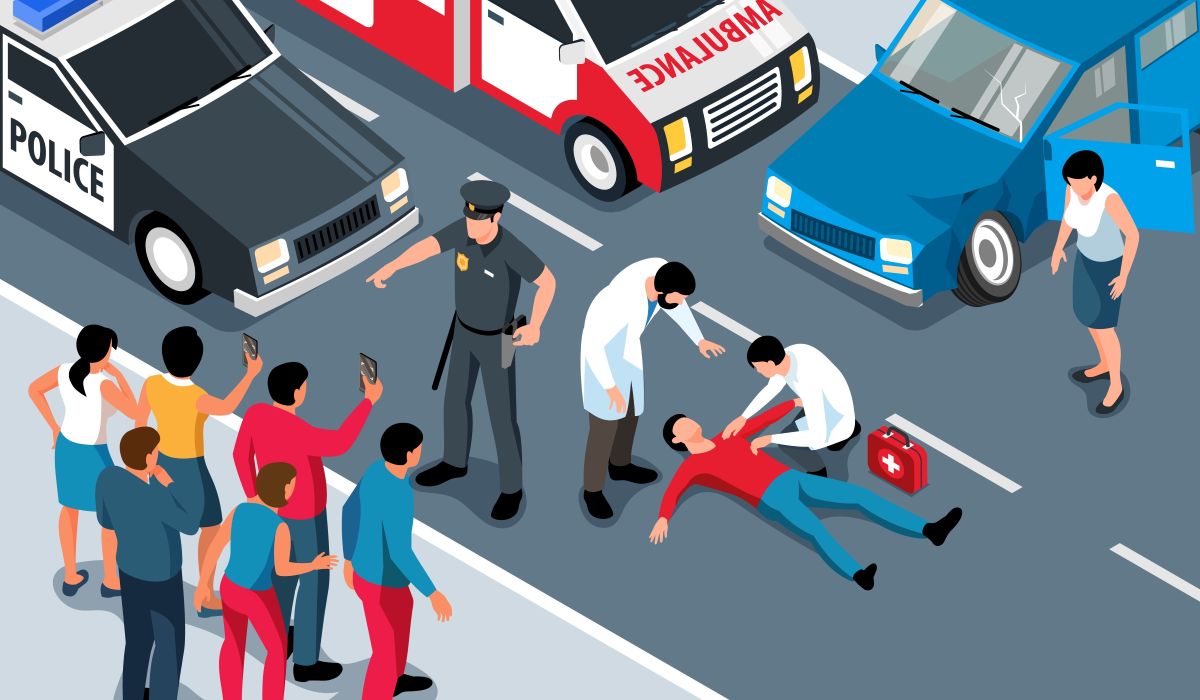
Knowledge Center

Accident and Emergency
| 28 August 2025
No matter if you are walking, riding a bike, or driving a car or motorbike, safety on the road is crucial for everyone. It's vital to understand how to react if an accident occurs, as these situations can happen to anyone at any time. Knowing how to administer basic First Aid for accident injury means you can be ready to assist yourself and others in need. This article explains how you can offer road accident first aid treatment.
There are a lot of different vehicles on the roads, like cars, buses, taxis, bikes, and people walking. More families are choosing to ride bikes, which is great for exercise and the environment. Additionally, electric cars are becoming more popular. These cars are quiet when they drive, so you might not hear them coming. Because of all these different types of vehicles and people on the road, it can be a risky place. There are more accidents happening because of this busy environment, making it important to be careful when on or near the roads. In order to stay safe on the road. The following will guide you through how to give first aid for road accident injuries.
Young children often have a hard time judging how fast cars are moving and how far away they are until they are around eight years old. This means they may not always realize when it's safe to cross the road.
Cyclists can get hurt easily in accidents on the road. This is why it’s very important for them to know what to do if an accident happens. You can visit our emergency medical hospital in Mumbai, to properly gain the confidence to help.
If you're cycling with children or teenagers, it's important to teach them why they shouldn't ride next to big vehicles like lorries or buses. These large vehicles have blind spots, which means the driver can't see everything around them. So, it's safer to stay away from them.
The best way to protect yourself and children while cycling is to always wear a helmet. It doesn’t matter if you’re just going for a short ride; the helmet can help keep you safe. Everyone who rides a bike should carry some basic items of first aid for road accidents. Even just having a couple of triangular bandages can be helpful in case of an injury.
The speed of a vehicle affects how likely a child is to survive being hit by a car. if a car is going 20 miles per hour (mph), most children have a good chance of surviving if they are hit. However, if the car is going just a bit faster than that, the chances of serious injury or death increase greatly.
Car accidents happen frequently because the roads and transportation systems in the country are often in bad shape. This situation emphasizes the necessity of having car insurance for your vehicle. Additionally, it's essential for us to understand the steps we should take following a car accident. Following are some steps that you can follow after a car road accidents and first aid Knowledge can help you there:
Before you do anything, make sure you are safe. Check that traffic has stopped, so you won’t get hurt by other vehicles.
Make sure other drivers know there’s an accident. This can help prevent more accidents.
Look for dangers like fuel spills or fires. If it’s safe, turn off the ignitions of the cars involved and use hazard lights or a warning triangle to signal danger.
If there are people nearby, ask them to call the emergency services (like the police or ambulance). If you’re alone, quickly check the situation and help anyone who is in serious danger first.
Figure out how many cars are involved and check the people in them for serious injuries.
When checking on injured people, start with those who are quiet or unresponsive (not making noise). Gently check if they can respond to you or if they are breathing. If they are breathing but unconscious, place them in a safe position (like lying on their side) to keep their airway open. Talk to them calmly; they might be able to hear you. Cover them to keep warm if possible.
Related: Recognizing Signs and Symptoms of a Stroke
Navigating the aftermath of a road accident can be daunting, but knowing the essential steps to take in first aid management of road traffic accident can help you handle the situation with confidence and clarity. Remember to prioritize safety, gather crucial information, and seek assistance when necessary. In moments of crisis, such as experiencing injuries or distress, it’s vital to turn to reliable resources. Should you require immediate medical attention, don’t hesitate to visit the Accident & Emergency Department in Mumbai at Jaslok Hospital & Research Centre, where a dedicated team is available to provide the care and support you need. By staying informed and prepared, you empower yourself to manage unexpected situations effectively and ensure the safety and well-being of yourself and others on the road.
All Copyrights Reserved. © 2026 Jaslok Hospitals | Managed by Digimanic